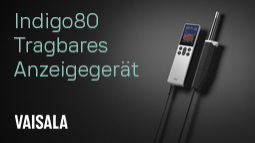Bausch+Ströbel – New developments at interpack 2017
B+S equipment also presented at the Siemens stand
50 Years of Innovation – and so much more to come! This is the 2017 motto of the specialty machine manufacturer Bausch+Ströbel, who was officially founded in 1967 – after a two-year preparatory phase in which the three young founders of the company had engineered and tested the company’s first machine in a garage. Since then, much has happened: Bausch+Ströbel has grown rapidly. Still, the B+S team does not rest on its achievements, as demonstrated by the latest developments presented at interpack 2017.
Barrier Technology is the central theme of Bausch+Ströbel’s presentation at interpack 2017. For this reason we are consciously presenting our filling and packaging machines in combination with a variety of isolator solutions. Our isolator applications range from a standardized solution that can be realized quickly and economically – such as the isolator presented by B+S together with Ziel at this year’s interpack for the very first time – to concepts for our customers by well-known isolator manufacturers.
The highly flexible VarioSys production system, developed by B+S in cooperation with Swiss isolator specialist SKAN, will be the centerpiece of our presentation in Düsseldorf. This cutting-edge system features innovative technology for quick changing of machine modules within a production isolator. VarioSys is a production system that is especially well suited for processing small batches by combining a special isolator with various machine modules – and, what is more: several modules can be connected in series to form a production line with a sterilizing tunnel, cleaning machine or freeze-drier.
VarioSys is continuously enhanced with the addition of new modules. In Düsseldorf, we are presenting a new machine module for processing ampoules. The AFV5105 module achieves up to 6,000 containers per hour at 100 percent IPC.
VarioSys in motion: VarioSys Move
Interchanging modules with our VarioSys has been really straightforward already, but a new feature we have added facilitates the machine operators’ job even more: Now, the modules can be interchanged automatically. VarioSys Move can move machine modules fully automatically from the parking position to the isolator and back again. The modules are precisely transported into the PSI-L isolator or into the parking position along a visible track. In the parking position, the transport system is recharged automatically. VarioSys Move moves the modules into the isolator or to the parking position either fully automatically, following a programmed sequence – as exhibited at interpack – or by remote control.
Barrier technology also plays a role in our Virtual Reality Center (VR) at the exhibition stand, where we are presenting the opportunities offered by Digital Engineering today. A variety of digital methods and tools are applied in developing sustainable machine concepts. Communication with the customer is enhanced, enabling much earlier decision-making in the equipment planning phase.
Virtual mock-up models can be tested and optimized in VR throughout all planning and design steps. For example, air flow conditions can be simulated during the product engineering process already. Traditionally, smoke studies are carried out much later, at the finished equipment, i.e. fog is introduced to visualize air flows and special imaging technologies are applied to analyze them. Then the real machine is changed and optimized.
In CFD (computational fluid dynamics) studies, by contrast, the machine design can be optimized during the engineering phase already, saving considerable amounts of time and cost.
We are even going one step further by simulating the impact the operators have on the air flow patterns, both inside and outside the working area of the machine, at an early stage. This requires extensive simulation processes and calculations, based on numerical calculation methods.
A model KCP will also be on display at our stand. What makes this compact filling and closing machine so flexible is, firstly, the fact that the containers are transported to the individual work stations by special clean room robots; and, secondly, that up to four work stations can be flexibly arranged and integrated into the KCP. At a later time, these work stations can be easily exchanged by the operating personnel. The KCP can be used to process almost all standard types of containers (vials, cartridges, etc.). A variety of processing steps (crimping, monitoring, etc.) can be integrated into the work flow with short changeover times.
This system uses the same control and filling technologies as high-speed machines, which means that the new processes developed for it can be easily transferred to large equipment. This feature offers interesting applications for the KCP, particularly in the field of packaging materials and process technology development.
Joint presentation by Bausch+Ströbel and Siemens
Siemens is showing a Bausch+Ströbel machine at their stand at interpack this year as well (as they already did at Hannover Messe). The two companies are presenting a joint, future-oriented project: Bausch+Ströbel and Siemens are working together with the common goal to achieve an increase in engineering efficiency by 30% over the next three years, i.e. by 2020. The applied method of choice is consistent digitalization throughout the value chain, from planning and design to engineering, and on to commissioning, operation and after-sales services. The core feature is a “digital twin” of the real machine to be built, i.e. a detailed virtual model which represents the machine in each development stage and is used for simulation and virtual optimization processes. The exhibited machine is a B+S machine for processing syringes in nests.
Bausch + Ströbel Maschinenfabrik Ilshofen GmbH+Co. KG
74532 Ilshofen
Germany












